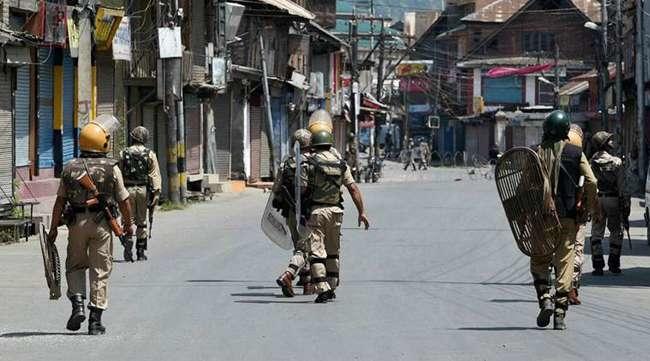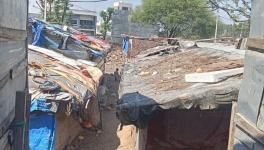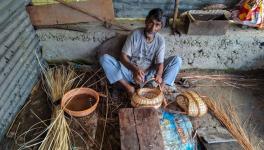Kashmir Needs Solution not Suppression

If war is continuation of politics by other means what politics lie behind the armed conflict in Kashmir? Indeed what is it that necessitated unleashing military suppression in 1989-90 by bringing in the armed forces empowered by AFSPA? Why was peaceful democratic resolution deemed unacceptable and crushing the demand became a matter of utmost importance? While we ask ourselves these questions it is time to ponder what narrative is being propped up about Kashmir here and now.
While venal debate initiated, not just inspired, by the Bhartiya Janata Party, unreservedly joined in by the Indian National Congress, over ‘giving the armed forces free hand’ as well as who killed more militants in Jammu and Kashmir, rivets the “nation”, one is left wondering if the two parties of the ruling classes have any bit of enlightened self-interest left in them. Do they ever ask where search for military solution has got us to? Whether they indeed heed even the wise words of generals or find fulminations of few others more to their liking? Especially at a time when the armed conflict ridden “Disturbed Area” with legal immunity in tow came under scathing criticism of UN Office of Human Rights Council.
Also Read: 30 Years Worth of Violations in a 49 Page Report
Writing in the Tribune on June 23 retired Lt General Hooda after averring that “overall strategy is obviously a joint politic-military exercise, this strategy is executed with complete freedom being given to local commanders. This has always been the case and politics does not intrude in this”. The aim he wrote is to create “secure environment” so that “all functions of government can be carried out without fear”. And then goes on to say that the “primary task” is to create conditions to enable holding of elections “peacefully and as practically feasible”. And then concludes by drawing attention to the fact that Army’s “strategy has proved successful and, on many occasions, brought the state to near normalcy. If any change in approach is required it is in looking beyond the military sphere”. Yes to look at the political approach.
The politico-military strategy it seems was limited to hand holding civil administration, holding elections and ensuring that civil administration could operate. This, as he himself says, is “conflict management” and not aimed at military resolution. He wrote that armed forces contained militancy several times and it was for the political authority to use this to resolve the conflict. Therefore, the insistence that it is not military approach at fault rather the political approach which has to be examined. Lt General D S Hooda as GoC-in-C of the Northern Command also pointedly asked that all stakeholders, including the Hurriyet and the street protestors be made part of the search for resolution. So his subtle if not implied criticism of the political authority and their failure to seize on opportunities provided on “many occasions” for resolution politically deserves attention.
Also Watch: BJP Pursuing Politics of Hyper-Nationalism: Urmilesh
There is an echo of what the Supreme Court bench of Justices Lokur and Lalit observed in their order in July 2016 wherein they pointed out that “indefinite deployment of armed forces” in name of restoring normalcy under AFSPA would “mock at our democracy”. They wrote that there has to be a “reasonable period” to restore normalcy and then went on to say that in their opinion “it would be indicative of the failure of the civil administration to take effective aid of armed forces or would be indicative of the failure of the armed forces in effectively aiding the civil administration in restoring normalcy or both”. (italics added)
Lt General Hooda insists that army has a rich experience of Counter Insurgency operations and draws attention to the fact that Army’s Doctrine of Sub-conventional Operations’ considers the “center of gravity of such operations” to be the populace and therefore “Winning Hearts and Minds is central to all our efforts during conflict management and resolutions”. Trouble is that when armed forces are deployed against our own people the nature of warfare changes as the Army’s own Doctrine acknowledges. Therefore, it says that distinction between “front and rear and combatants and non-combatants” gets blurred. A 2003 study of stress and trauma among serving personnel of the armed forces acknowledges that “in general war the nation looks upon the soldier as a savior, out here (in Disturbed areas) he is at the recieiving end of public hostility” which results in the soldier getting “desensitized”.
Critics have pointed out that winning hearts is one thing, but to win minds is a coercive pursuit. Indeed the same ‘Doctrine of Sub-conventional Operations’ 2006 also points out that the objective of their operations is to “transform the will and attitude” of the people and reminds that it can take from ‘few years to few decades’ to bring this about.
Also Watch: Kashmir Anantnag Encounter: Four Militants, One Civilian and Policeman Killed
The apex court had said that “ordinarily our armed forces should not be used against our countrymen and women” and that there has to be a “reasonable period” if this is necessary. So the point is that if after nearly three decades the armed forces are yet having to manage or contain armed conflict what does it say about the quality and value of the political approach guiding it? If it is once again reduced to holding elections then it is evident that India’s rulers still evade the reality they have brought about where nothing other than military solution is championed.
Tragedy for us Indians is that armed forces are brought in because the Government of the day fails to resolve a conflict politically (or as it did in Kashmir by first destroying self-rule and then hollowed out constitutional autonomy) and instead settled for military suppression of a movement because they questioned “Union with India”. What neither the armed forces nor the Government are willing to admit is that the very fact of waging war vitiated the possibilities of solution and therefore, paved the way for emergence of popular resistance. Thus it is refusal of successive governments of India to search for political resolution that ought to be examined. Because it is not that Kashmiri people’s perception of Indian government waging war against them is misplaced, it is not, but far more dangerous is the perception of India’s political authority which boasts it is fighting a war against Pakistan and ‘jehadists’ controlled by them and claims that solution lies in their suppression.
It is particularly noteworthy that religious radicalization is not unique to Kashmir it is an overarching reality in India where Hindutva hordes have been on a rampage in Jammu as well as rest of India. In Kashmir, law bends in favour of the perpetrator not the victim/survivor, as so eloquently brought out by the OCHRC report. No wonder this phase of militancy from 2016-18 shows that encounter sites and funerals continue to attract people in thousands. Now Pakistan can take advantage of conditions created by Indian authorities, it cannot create those condition. If Pakistan is accused of fomenting trouble it would amount to a severe indictment of the Indian Government itself, which despite the massive deployment of armed forces and administrative control over J&K since 1947 and let Pakistan to bring this situation about under their very nose! Since patriotic Indians will howl in protest at this they ought to shed this Pakistan-behind-all-our-trouble syndrome and acknowledge that the real issue is this condition of people where they continue to reel under military suppression with not an opening in sight towards political resolution.
So in four years what ‘pracharak sarkar’ of BJP has achieved is that even the pretense of representative government has been removed which brings home more sharply than before that Kashmiris are after all confronting a war being waged against them. If nothing else then it is high time to ask ourselves that since this war has gone on for nearly three decades is it not time to accept its failure and for once face the truth and begin in earnest search for a democratic peaceful solution. If neither right of self-administration nor self rule/autonomy is acceptable to India’s rulers and only military suppression is preferred to bring about assimilation then what options do people have other than fighting or supporting those who fight for them? Especially at a time when Indian media damns the OCHRC report, scared even to share its contents with the public, remains oblivious of Hindutva radicalization across the country but waxes eloquent over presence of Islamists in Kashmir, then let us not pretend that India has anything to offer Kashmiris. So, until Indian government gets serious about solving the 70-year-old dispute, which shows no sign of happening soon, neither the armed forces will cease hostilities nor militancy can be brought to an end.
In this sense, the import of what Lt General D S Hooda wrote lies in pointing to the political approach which needs to change from its obsessive concern with elections as barometer of normalcy and towards solving the dispute where the “centre of gravity” is the populace which is demanding Azaadi and which deserves a political resolution not suppression which has failed miserably as thirty years of Disturbed Area and AFSPA so poignantly brings out.
Get the latest reports & analysis with people's perspective on Protests, movements & deep analytical videos, discussions of the current affairs in your Telegram app. Subscribe to NewsClick's Telegram channel & get Real-Time updates on stories, as they get published on our website.
























